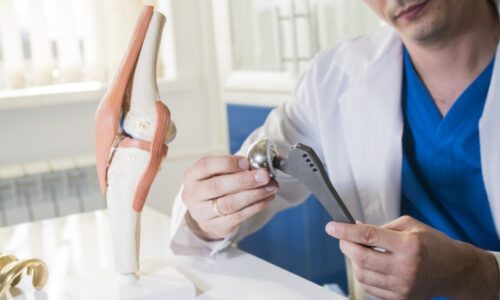Learning about Spinal Compression Fractures |
Dr. Brian Schiro, Interventional Radiologist with Miami Cardiac and Vascular Institute, says when a compression fracture occurs the bone squishes down on itself, because the bone is not able to support the weight of the body.
Dr. Adam Geronemus, Associate Director of the Fibroid Center at South Miami Hospital, explains any inflammation of the joints that stops the freedom of movement would cause pain with each movement.
Transcript
Compression fractures because it’s a pretty common, right? Compression fractures and how common are they? Can we maybe use that little model to show our viewers maybe what we are talking abour. > it’s gonna give you a better idea of what’s happening with the with the bones. So most commonly when a compression fracture occurs it occurs in this portion of vertebral body, okay. That’s the the the part that’s in front that’s right the gray section okay so the disk is what we’re seeing as the the tan section here and the the bone is the gray section and the bones composed of several components are some in the front there are some pieces in the back. What we’re most concerned with is the the front portion of the bone, I… which is involved in compression fracture. What happens in this type of fracture is that the bowing squishes down on itself because the the bone is not able to support the the weight of the body. So this piece of bone compresses down and because of that it results in significant pain, — but that’s a lot of Pain– > And then this is a great model because this also shows what we were talking about before with all the different ideologies or causes of pain. So when Brian talked about the compression that’s the vertebral pain, these this side here if you see that the bones move and those are the joints. So any inflammation those joints that stops that freedom of movement would cause pain with each movement and then as Brian said the discs are the cushions between and if you look we’re standing all day and gravity is pulling you down and over-aged that these discs become less what we call dehydrated or have less fluid within the within the discs and that causes the bones to get closer and closer so either the bones could be rubbing on each other and giving you pain, or back here is where the spinal canal runs in in the nerves and if this disc pushes back a little bit then that disc could be touching the nerve and all it has to do is barely barely touch it and it could cause a significant amount of pain. So as you see the spine while it looks quite simple there’s a lot of different ways that just one little thing going wrong could cause a lot of pain.
You might also be interested in








